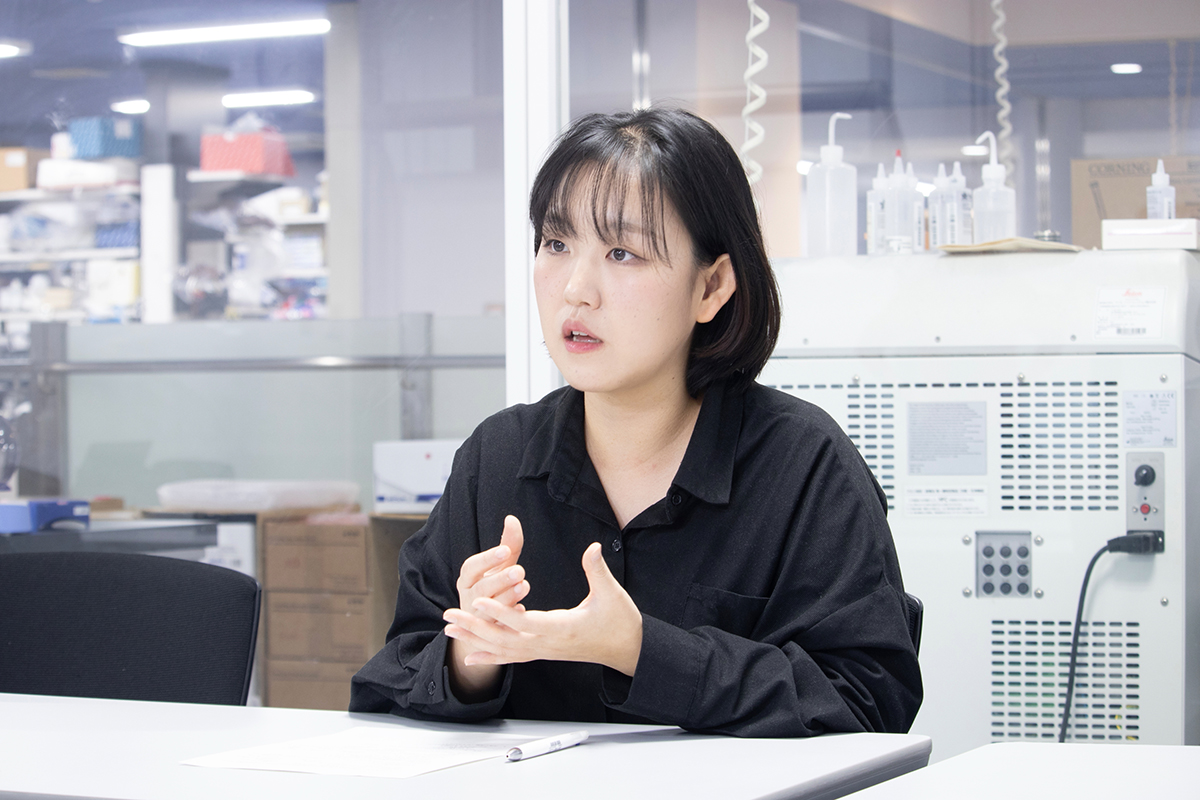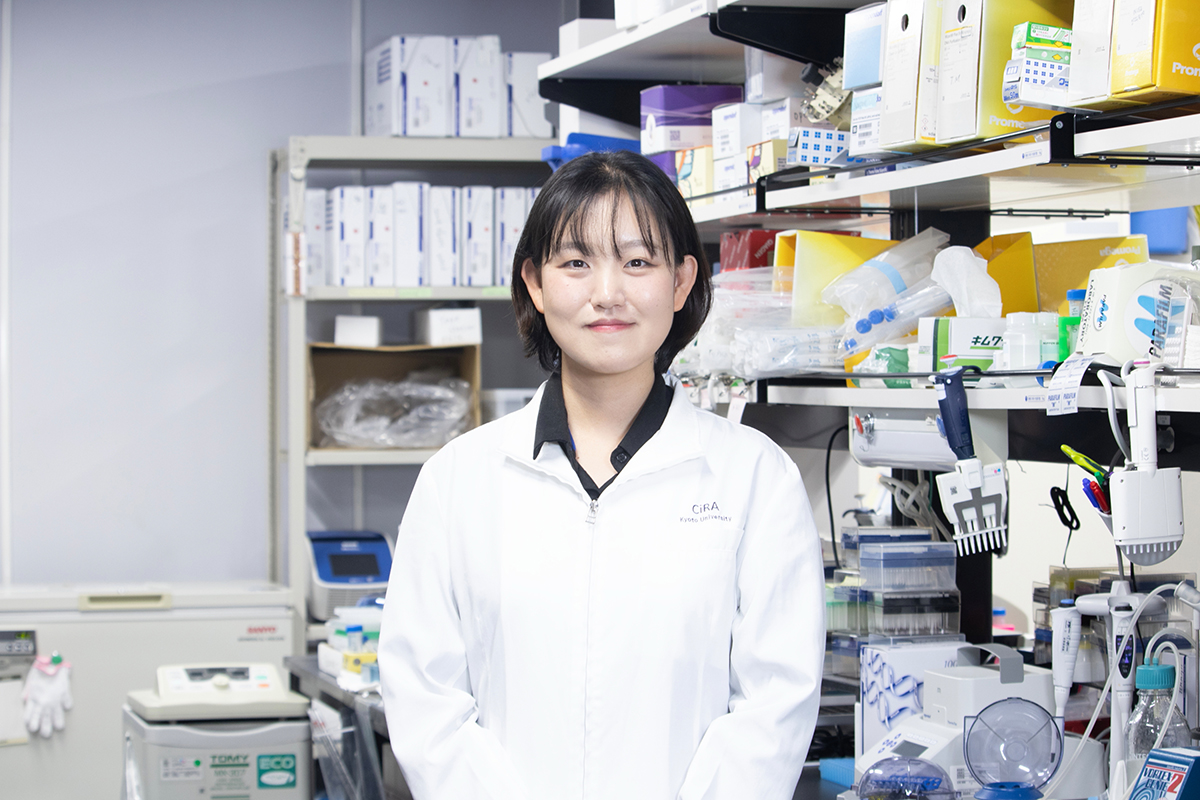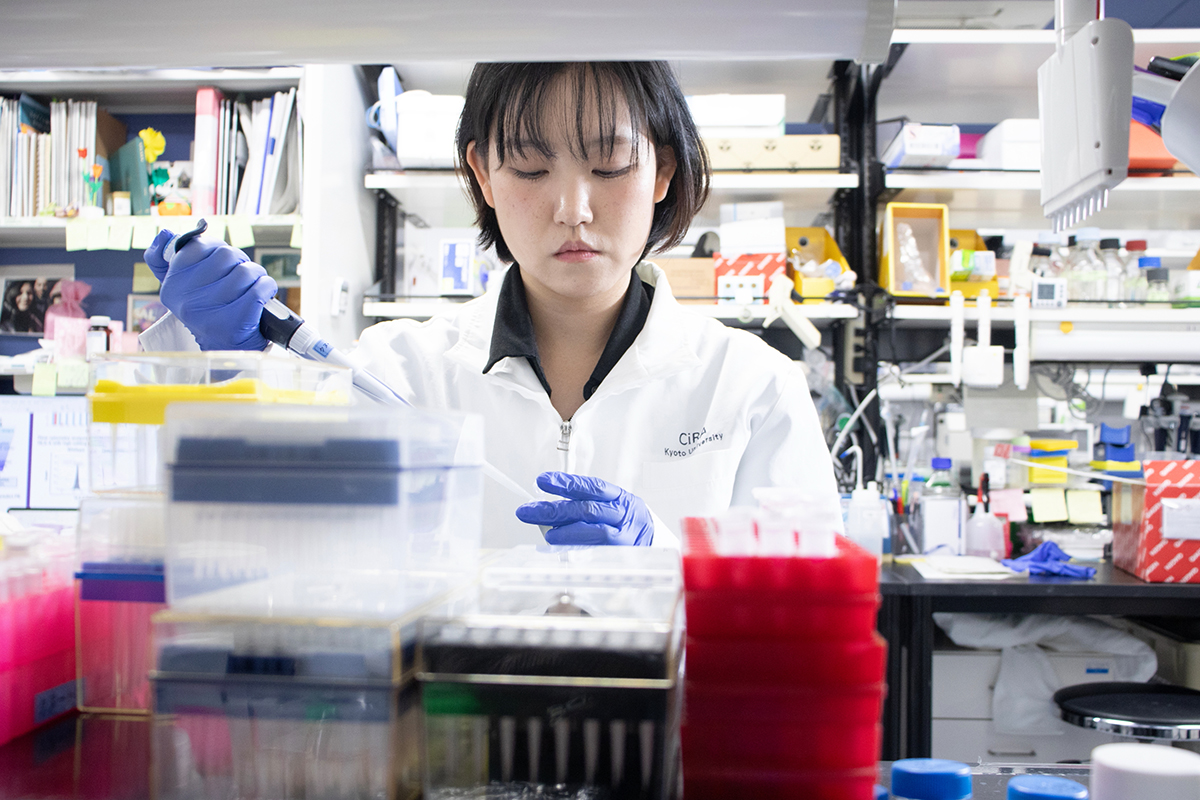
CiRA Reporter
CiRA Reporter

People
June 26, 2025
Unveiling the Vast Potential Hidden Inside a Tiny World

Suji Lee
"Cells may be a tiny world, but within them lies an enormous universe," says Lee, reflecting on her lifelong fascination with the microscopic systems that shape life itself. From a young age, she was captivated by how the smallest building blocks of life—cells—hold vast mysteries, ultimately leading her to become a cell biologist.
"Just as there is much we do not understand about the universe, there are still many unknowns within our own bodies," she explains. Her desire to create something new using the crucial technology of iPS cells ultimately led her down the path of genome editing.
Currently, she is developing techniques to edit the human genome on a broad scale using iPS cells. "To create accurate disease models, we can make iPS cells that carry gene mutations responsible for a disease to go beyond introducing a single mutation into iPS cells. By also modifying the surrounding nucleotide sequences, we can better replicate natural variations," she explains.
By observing phenomena in our genomes, new ideas may emerge. Lee believes this creates a positive cycle of discovery and innovation.

At the open lab
When asked about the rewarding aspects of her work, Lee’s eyes lit up, saying, "I love formulating new hypotheses and testing them, one step at a time." In her current research, she is investigating how to replicate the natural genome repair mechanisms found in human cells within iPS cells. "I find it very fulfilling whenever I see results matching my predictions," she says.
Scientists have discovered that DNA regions once thought to be functionless actually play vital roles. There is still much to learn about the genome, and Lee is excited by the possibility of making groundbreaking discoveries that challenge conventional wisdom.
Additionally, she is involved in education, mentoring students in the lab by sharing experimental techniques and training them. "It is rewarding to watch other young researchers grow into independent scientists," she says.
Lee says, "The more complex the research becomes, the more important it is to communicate it in an easy-to-understand way." Lee also values science communication and participates in events to introduce research to people of all ages. Recently, she engaged in an activity where participants extracted DNA from bananas to help them appreciate the invisible world of genomes.
"Science is driven by researchers, but its value increases when the public understands it," she explains. "Genome editing can seem intimidating, but it is also a tool to help us understand the mysterious processes happening inside our bodies. It reveals a deeper world that I hope more people will explore."
With each discovery, Lee Suji brings her research one step closer to real-world medical applications by unlocking the hidden potential within the microscopic world inside our cells.

Suji Lee during her experiment
-
Interviewed and written by Chiaki Yoshino
A freelance writer and editor with over 200 published pieces—including owned media content, press releases, interviews, and books—she specializes in science communication, highlighting the impact of universities, companies, and local communities.
(Translation: Kelvin Hui Ph.D., CiRA Research Promoting Office)






















